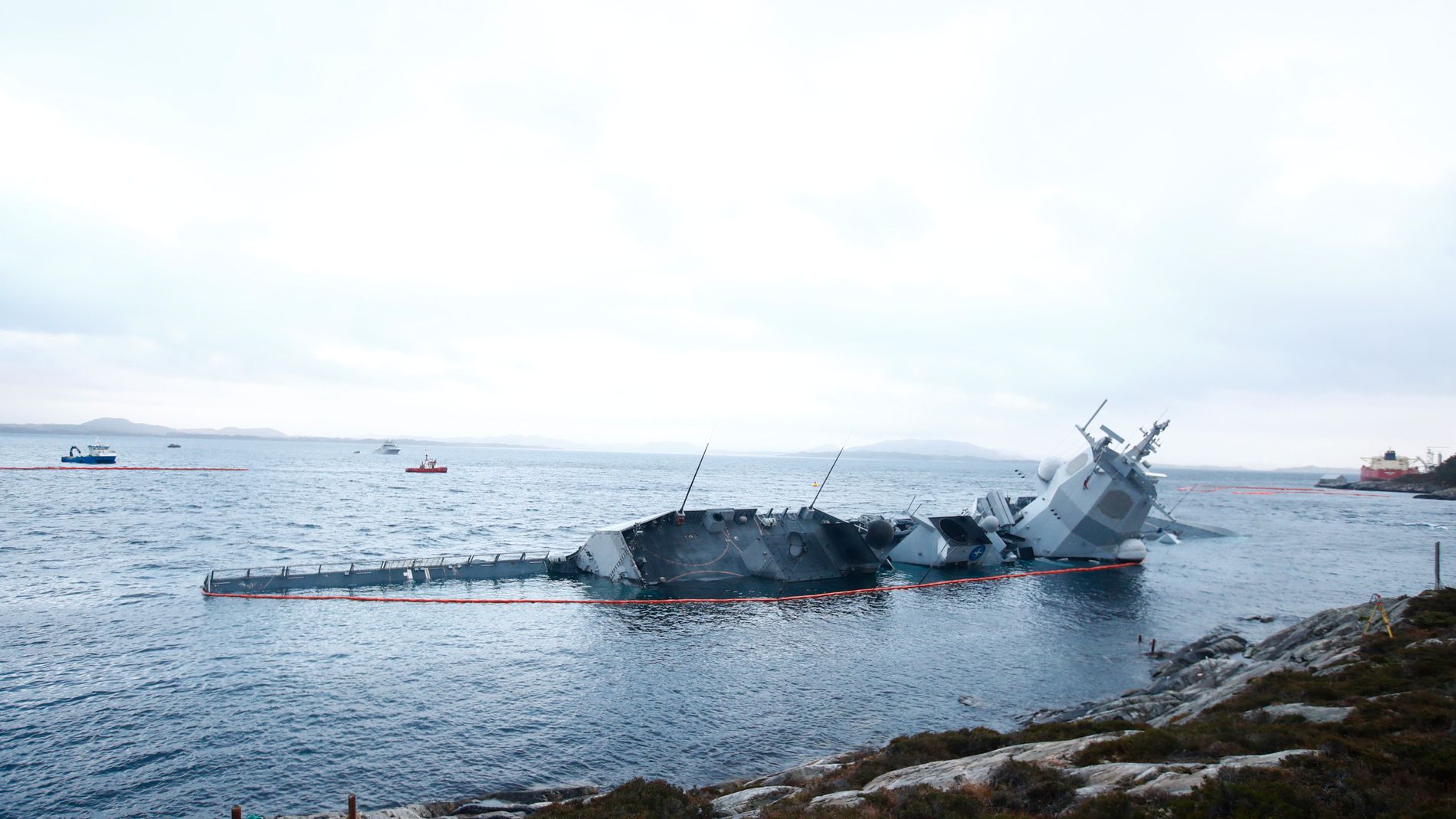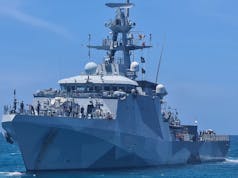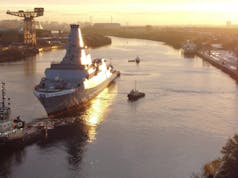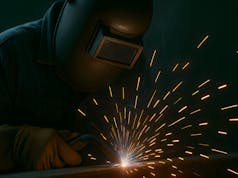The frigate HNoMS Helge Ingstad and the tanker Sola TS collided in the Hjeltefjord in the early hours of the 8th of November 2018, eventually resulting in the loss of the frigate.
Officials have now released a report containing the results of the first phase of the Accident Investigation Board Norway’s investigation into the collision involving the Norwegian frigate Helge Ingstad and the oil tanker Sola TS outside the Sture terminal in November 2018.

Investigators determined that the incident, that resulted in the loss of the frigate, was the result of safety and training issues within the Norwegian Navy.
According to the report summary:
“HNoMS Helge Ingstad sailed south at a speed of approximately 17–18 knots with the automatic identification system (AIS) in passive mode, i.e. no transmission of AIS-signal. The frigate’s bridge team had notified Fedje Vessel Traffic Service (VTS) of entering the area and followed the reported voyage. Sola TS had been loaded with crude oil at the Sture Terminal, and notified Fedje VTS of departure from the terminal. Sola TS exhibited navigation lights. In addition some of the deck lights were turned on to light up the deck for the crew who were securing equipment etc. for the passage.
In advance of the collision, Fedje VTS had not followed the frigate’s passage south through the Hjeltefjord. The crew and pilot on Sola TS had observed HNoMS Helge Ingstad and tried to warn of the danger and prevent a collision. The crew on HNoMS Helge Ingstad did not realise that they were on collision course until it was too late.
At 04:01:15, HNoMS Helge Ingstad collided with the tanker Sola TS. The first point of impact was Sola TS’ starboard anchor and the area just in front of HNoMS Helge Ingstad’s starboard torpedo magazine.”
The AIBN’s investigation reported that the situation in the Hjeltefjord was made possible by a number of operational, technical, organisational and systemic factors:
- As a consequence of the clearance process, the career ladder for fleet officers in the Navy and the shortage of qualified navigators to man the frigates, officers of the watch had been granted clearance sooner, had a lower level of experience and had less time as officer of the watch than used to be the case. This had also resulted in inexperienced officers of the watch being assigned responsibility for training. Furthermore, several aspects of the bridge service were not adequately described or standardised. The night of the accident, it turned out, among other things, that the bridge team on HNoMS Helge Ingstad did not manage to utilise the team’s human and technical resources to detect, while there was still time, that what they thought was a stationary object giving off the strong lights, in fact was a vessel on collision course. Organisation, leadership and teamwork on the bridge were not expedient during the period leading up to the collision. In combination with the officer of the watch’s limited experience, the training being conducted for two watchstanding functions on the bridge reduced the bridge team’s capacity to address the overall traffic situation. Based on a firmly lodged situational awareness that the ‘object’ was stationary and that the passage was under control, little use was made of the radar and AIS to monitor the fairway.

- When Sola TS set out on its northbound passage with the forward-pointing deck lights turned on, it was difficult for the frigate’s bridge team to see the tanker’s navigation lights and the flashing of the Aldis lamp, and thereby identify the ‘object’ as a vessel. The shipping company Tsakos Columbia Shipmanagement SA had not established compensatory safety measures with regards to the reduction of the visibility of the navigation lights due to deck lighting. Furthermore, radar plotting and communication on the bridge did not sufficiently ensure the effect of active teamwork to build a common situational awareness. This could have increased the time window for identification and warning of the frigate.
- The Norwegian Coastal Administration (NCA) had not established human, technical and organisational barriers to ensure adequate traffic monitoring. The functionality of the monitoring system with regards to automatic plotting, warning and alarm functions, was not sufficiently adapted to the execution of the vessel traffic service. Lack of monitoring meant that the VTS operator’s situational awareness and overview of the VTS area were inadequate. Hence, Fedje VTS did not provide the vessels involved with relevant and timely information and did not organise the traffic to ensure the tanker’s safe departure from the Sture Terminal.
- On the southbound voyage, HNoMS Helge Ingstad sailed with AIS in passive mode. This meant that the frigate could not be immediately identified on the screens at Fedje VTS or Sola TS. None of the parties involved made sufficient use of available technical aids. It was a challenge for maritime safety that the Navy could operate without AIS transmission and without compensatory safety measures within a traffic system where the other players largely used AIS as their primary (and to some extent only) source of information.













Of course, this would NEVER happen in the RN! One hopes!
Looks to me like the investigation report is an attempt to paint the Norwegian Navy in a slightly better light by highlighting errors from the tanker crew. The errors from the vessel unberthing in this case are marginal factors considering the frigate was proceeding at 17-18 knots ! That is no way a safe speed in that channel with that traffic and proximity to land. The Frigate is the overtaking vessel and is therefore the give way vessel. The Frigate was not maintaining an adequate look out ”…by sight and by sound and all available means…”.
I would apportion about 5% liability to the tanker and 95% to the Frigate. Interesting to see what the admiralty court adjudicates.
The VTS ”failings” as well are again a smokescreen for the crap practices of the Norwegian Navy in this case. VTS is traffic management not collision avoidance.
The attached video from the Norwegian ins estimation team makes some interesting watching.
https://www.aibn.no/Marine/Published-reports/2019-08-eng
They say that they re-creates the incident using another Norwegian frigate and the tanker and got confused as they couldn’t see the nav lights also the VTS didn’t register the frigate.
All in all whilst the navy needs to up its training the all need a healthy shake up and should be lucky nobody was killed.
I wonder if the Norwegians would like to get on bandwagon buying the Type 26 Frigate to replace their lost ship and get a few more to beef up their Navy!
Also they should replace their rubbish NH90 with more EH101 Merlins which they have bbought for their SAR.
Id be interested too as to what the Norwegians decide to do – presuming they do actually want to replace the Helge Ingstad they have a few options (1) Order a direct new build replacement from Navantia (2) Buy one Second hand from the Spanish Navy ( the Alvaro De Bazan class are more or less the same design) (3) Join the Spanish Navy and order one of the latest F110 class Frigates – these are close to starting production if they haven’t already done so (4) Buy a completely different design like as you say a Type 26 and finally (5) If Navantia is successful with the US Navy bid for its FFG(X) programme order one of their winning designs.If I was a Gambling man id go for option (3) but think (2) is more likely.
Reminds me of when we entered the Solent at night in a gaff sloop gog few years back (no mod cons / radar) and saw commercial navigation lights a ‘long way off’. After a time we decided the vessel could not be moving and proceeded across the channel – only for this very massive craft to commence looming out of the night at what, in the lighting conditions, seemed a rapidly approaching and ever increasing rate of knots, what it had no doubt been doing all along. Got across at our ponderous rate fairly safely, but did occasion a well deserved blast from the vessel. Contrasted sharply with the ease we’d crossed the Channel traffic separation zones both ways in daylight.
That said, there appears no positive light in which you can view any of circumstances of this loss, from training through to hull integrity, for the Norwegian navy.
Had a similar experience when I was on TS Lord Nelson about 20 years ago (God how did that happen!!). We were sailing near the Canaries and I was on the helm when we sighted a ship on the Starboard bow. Visibility was good, dark night and plenty of stars but this guy just kept coming. We were running standard Navigation lights for a sailing vessel.
Anyway the OOW and I were getting nervous as the other vessel was not showing any signs of having seen us, so the OOD turned the mast illumination lights on. Looked very pretty in the pitch black with the bright white masts and yards all light up. Well it turned out the other guy was wide awake as he turned his lights on a few seconds latter. Relief and giggles all round. I guess he just wanted to see who we were as we passed at less than a mile apart going in opposite directions in the middle of the Atlantic Ocean. That seemed pretty close at the time, especially when you realise that dramatic course changes in a square rigger take a very looonnnnng time!
Happy days!
Still very shocked at how quickly she was lost to the water.
Does the report say anything about the rumours of shoddy welding on the bulkheads and the doors not being water-tight etc?
The part 2 of the report will cover the other contributing factors that you mentioned.